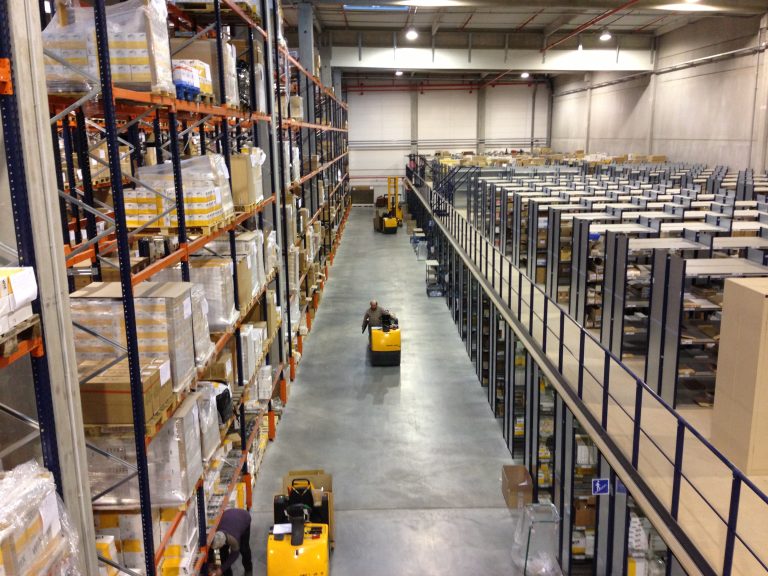
Luxury logistics: a complex and evolving challenge

What is a luxury product ?
The definition of a luxury product is often nuanced and subjective. A luxury product is often associated with rarity, exclusivity and a unique experience, but it is not distinguished only by its high price. For example, even inexpensive and insignificant items, such as a rubber gasket, can be essential to the smooth running of prestigious cars like Rolls Royce. This underlines the fact that luxury includes various dimensions, including the quality of materials, craftsmanship, technological innovation and customer experience. That’s why luxury logistics has become a major challenge for top-of-the-range brands keen to maintain their prestige but also to offer an unparalleled customer experience, from order to delivery.
Luxury: particularly demanding logistics
Luxury goods logistics presents unique challenges that go beyond simple transport and warehousing concerns. Preserving product quality and integrity requires strict storage conditions.
For example, perfumes and cosmetics contain ingredients that are sensitive to variations in temperature and humidity. Inappropriate conditions can compromise their properties, thereby altering the user experience. Exceptional wines and champagnes, other symbols of luxury, also require rigorous storage to maintain their aromas and flavour. To meet these requirements, warehouses must propose climate control systems and monitoring devices, ensuring that products remain in perfect condition throughout the supply chain.
Luxury under high surveillance: ensuring cleanliness, security and traceability
In the luxury goods sector, the cleanliness and security of warehouses are imperative. Hygiene standards are particularly strict. Storage areas are cleaned carefully and regularly, to protect delicate materials such as leather and silk. The use of gloves when handling high-value products becomes the norm, symbolising the importance of respectful treatment. As for security, luxury brands are investing heavily in sophisticated systems, including surveillance cameras and rigorous access controls. These measures aim to protect products while ensuring rigorous traceability, which is essential for stock management and fraud prevention.
Product traceability is essential not only to ensure safety, but also to maintain quality and establish a relationship of trust with customers. Technologies such as blockchain and RFID enable brands to track every stage of the supply chain.
Warehouse Management Systems (WMS) and RFID technology are key tools for optimising logistics operations. WMS offer real-time visibility of stock levels, making it easier to manage orders and minimise errors. On the other hand, RFID and blockchain technology improve product traceability, enabling brands to reassure their customers about the authenticity and origin of items. The integration of these technologies does more than just optimise costs; it also makes it possible to anticipate trends and adapt the offering to customer preferences.
Since June 2024, Louis Vuitton has been testing The Box by LivingPackets. This intelligent, secure and durable packaging is equipped with a state-of-the-art locking system and sensors that provide real-time data on location, pressure, temperature and humidity.
Luxury: multi-channel logistics
The diversity of distribution channels in the luxury sector poses a logistical challenge as well as offering unique opportunities. Luxury products are not only sold in physical boutiques. They can also be found in upmarket retail outlets such as department stores’ corners, gourmet foods, perfume shops, etc. The rise of e-commerce is also transforming the relationship between brands and customers, making logistics all the more crucial to maintaining a prestigious image. Although luxury brands did not immediately embrace the concept of e-commerce, fearing that the customer experience would be tainted and their image tarnished, it has now become an essential segment. They now have to juggle exclusivity and accessibility, ensuring that every order is delivered on time and in the best possible condition. Real-time stock management is becoming essential to adapt to seasonal variations and special events, such as festive periods (Christmas, Valentine’s Day, Mother’s Day…).
The customer experience: a key element in the world of luxury
The customer experience extends beyond the product itself, encompassing elements such as the packaging and therefore the unboxing ! For luxury brands, opening an order must be a memorable moment. The packaging must not only protect the product, but also offer a sensory experience. The texture, colours and scents all contribute to a lasting and pleasant impression.
Digital and physical interaction also play a crucial role in creating an immersive experience. Brands also need to invest in personalisation services that make their purchases unique, such as engraving on perfume bottles or branding on leather goods. Given these demands, warehouses are faced with specific challenges linked to the management of copacking and kitting, where precision and attention to detail are essential. They have to integrate technological processes that enable products to be customised while maintaining a high quality of service, where each engraving or assembly of an item must be carried out with the utmost care. Operational flexibility is therefore becoming a necessity in order to adapt to these numerous demands, reinforcing customer commitment and creating lasting memories associated with their items. The purchase of a luxury product, whether online or in a boutique, must be an unforgettable experience for the customer, in addition to the item purchased.
The importance of outsourcing and logistics partnerships
The choice of logistics partners in the luxury sector should not be taken lightly. Brands need to partner with companies that have a deep understanding of the luxury requirements we have just discussed: quality, security, customer experience… Successful collaboration with specialised and trusted partners enables brands to ensure that every stage of the supply chain reflects their values of excellence. This also includes innovative and flexible logistics solutions capable of responding to market developments, particularly those linked to personalisation and e-commerce. For example, you can have your online order delivered to your home by a white-gloved delivery driver.
Ensuring luxury excellence every step of the way
Luxury logistics isn’t just about preparing an order to send to the client; it’s about creating exceptional experiences that captivate consumers. By optimising every aspect of their supply chain, brands can not only meet their customers’ expectations, but also stand out from the crowd in an ever-changing market. It is this quest for innovation, agility and continuous adaptation that will enable luxury players to seduce a demanding clientele, while cultivating lasting relationships.
In other words, luxury logistics must live up to the products themselves, reflecting the values of excellence and craftsmanship characteristic of this market.



